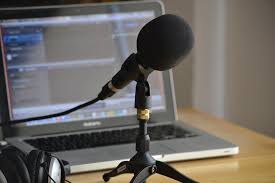Directions #1: Review the list of optional topics below. Identify and focus on your subject matter by using these subjects or something else you have in mind.
Women
Directions #2: Research your topic thoroughly and find a minimum of 6 high quality sources.
Seek a variety of sources: primary, secondary, oral history, websites, scholarly papers, books, etc.
Provide a Works Cited.
Create a Google Slideshow to provide a summary of the story you will tell (Think 5 W’s + H) this can be a visual resource that you link to the show notes in your podcast once published.
Directions #3: Record and edit your episode 1, publish using a Mp3 file.
Share with 2 people you think would benefit from hearing the story.
Record episode 2, capture reactions or brief discussions with your chosen audience noting their responses, thoughts, feelings, etc. about the information.
Record episode 3 reflection that captures how you feel about the entire process, how it changed your point of view and how sharing the work impacted you. You might also include next steps for sharing the word on your story further.
Women
- Made by Her: Hulu commissions monuments of 3 historic women to help balance gender disparity in US public art
- Historical sites dedicated to women
- Inside the Push for More Public Statues of Notable Women
- 21 Historic Queer Sites in SF
- SFO’s tribute to Harvey Milk is imperfect-but still invaluable
- Houyee Chow, Alumna creates mural celebrating LGBTQ life in San Jose
- StudioBE New Orleans
- NATIONAL AFRICAN AMERICAN HISTORIC LANDMARKS BY STATE
- Olympic Black Power Statue
- L.A. Freeways are the most racist California Monuments
- What’s left of Confederate monuments in California?
- Black Panther Party unveils Huey P. Newton statue in Oakland
- Monument to Native Californians to replace Junipero Serra
- State Parks and Museums Interpreting California Indian Culture and Heritage
- Desert tribes seek monument status for sacred mountain
- City of Eureka sees Natives take back Tuluwat Island
- Schools, places, mascots and sports team names replaced example from Maine
- Native American boarding schools - The Hunt for Truth and Healing
- Filipino Americans Hope for more recognition with the new arch in L.A.’s historic Filipinotown
- Places - Asian American and Pacific Islander Heritage (U.S. National Park Service)
- Manzanar Historic Site
- Hmong refugees in California (central valley and north coast)
- How female Brown Berets created their own Chicana movement - Los Angeles Times
- Preserve Latino History
- 10 Places in California with Strong Hispanic Influences
- Bracero Program
Directions #2: Research your topic thoroughly and find a minimum of 6 high quality sources.
Seek a variety of sources: primary, secondary, oral history, websites, scholarly papers, books, etc.
Provide a Works Cited.
Create a Google Slideshow to provide a summary of the story you will tell (Think 5 W’s + H) this can be a visual resource that you link to the show notes in your podcast once published.
Directions #3: Record and edit your episode 1, publish using a Mp3 file.
Share with 2 people you think would benefit from hearing the story.
Record episode 2, capture reactions or brief discussions with your chosen audience noting their responses, thoughts, feelings, etc. about the information.
Record episode 3 reflection that captures how you feel about the entire process, how it changed your point of view and how sharing the work impacted you. You might also include next steps for sharing the word on your story further.

Consider sharing a SHORT version (2-5 minutes) of your podcast here by June 2023
KQED Youth Media Challenge Resource & submission link
KQED Youth Media Challenge Resource & submission link
